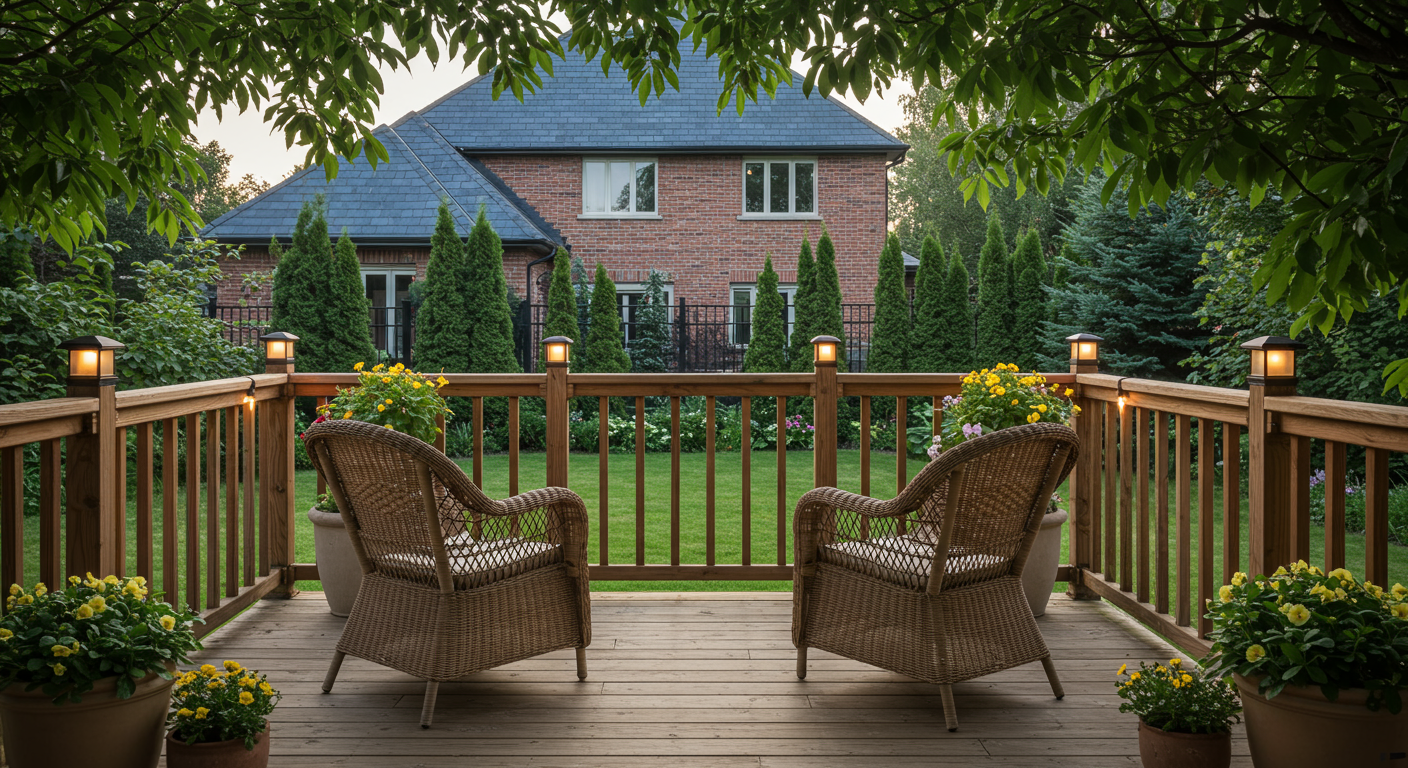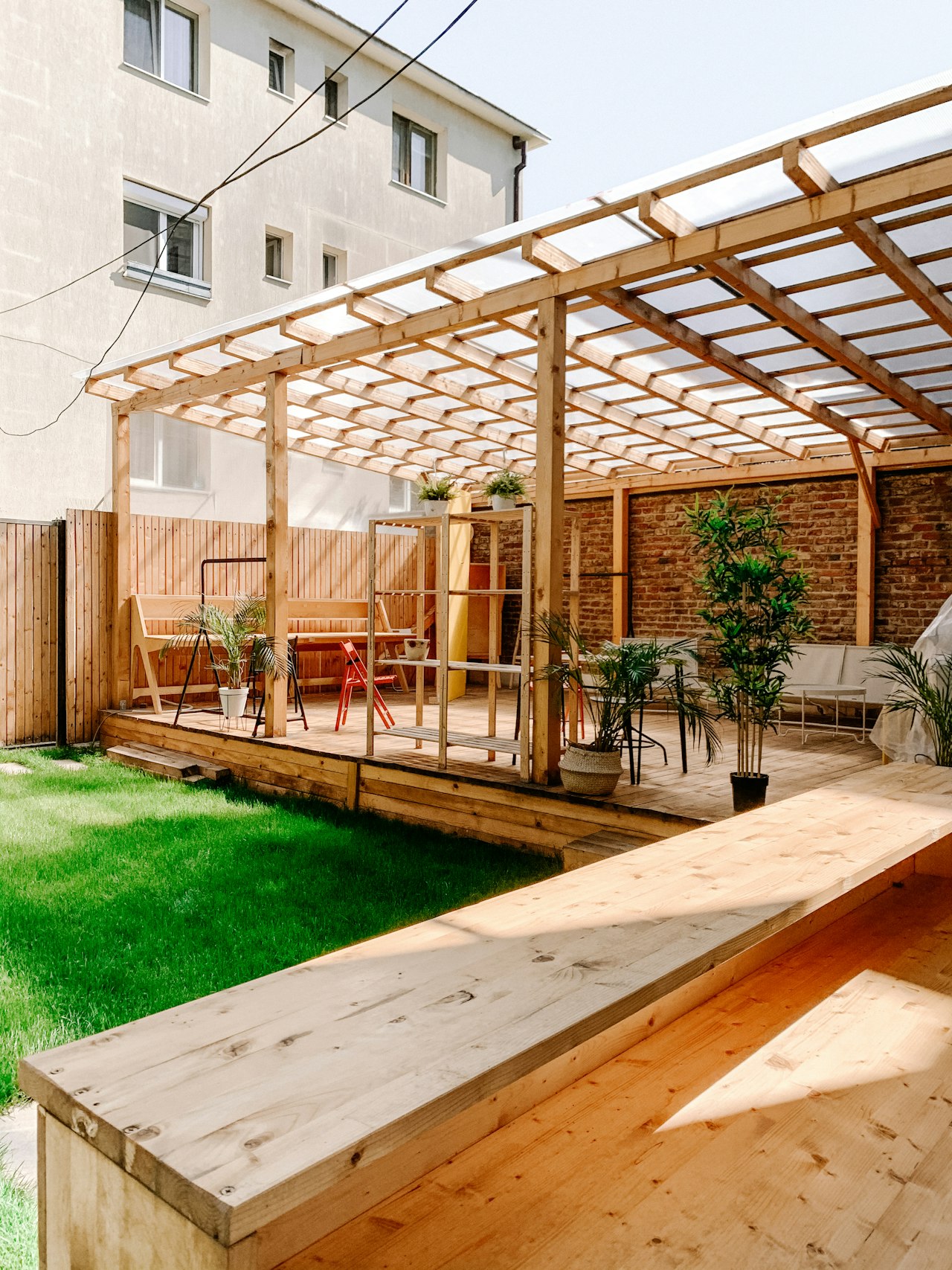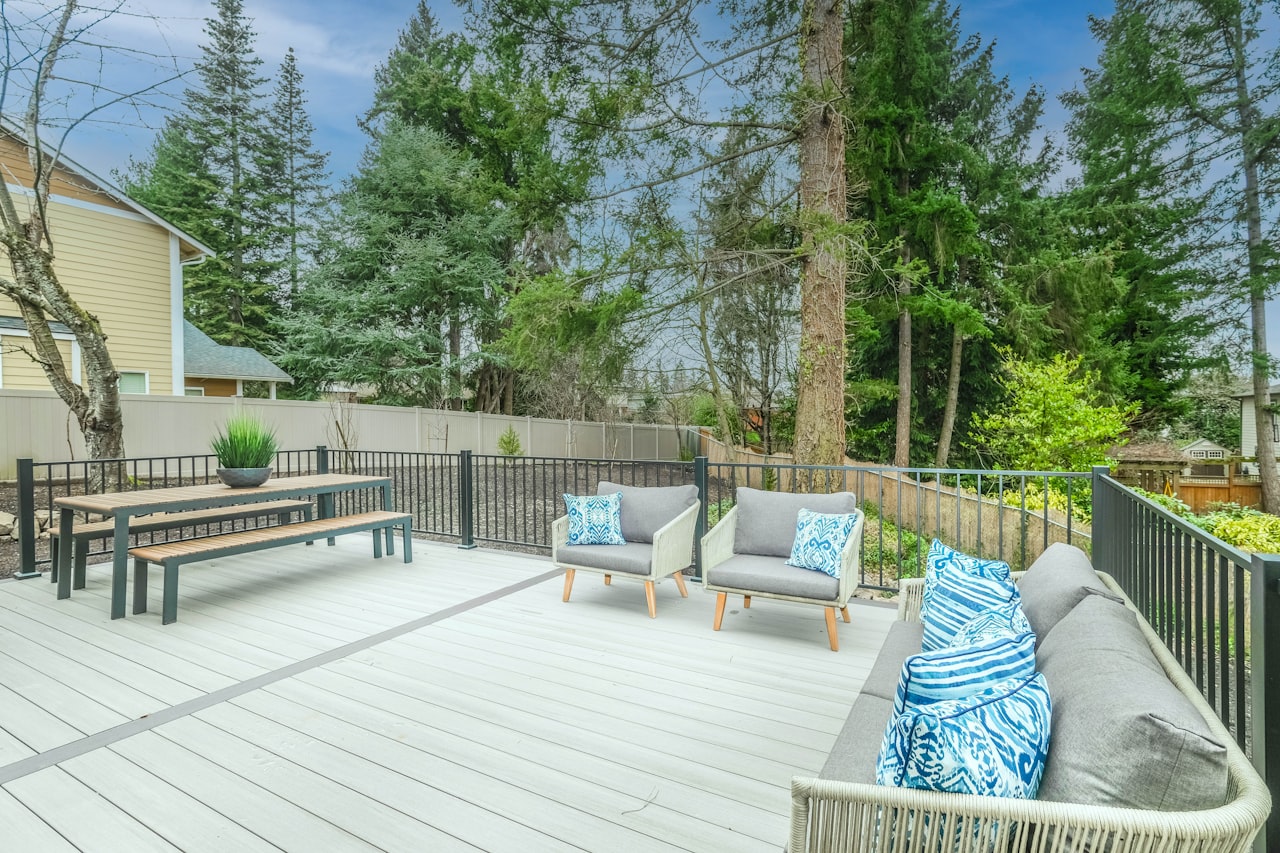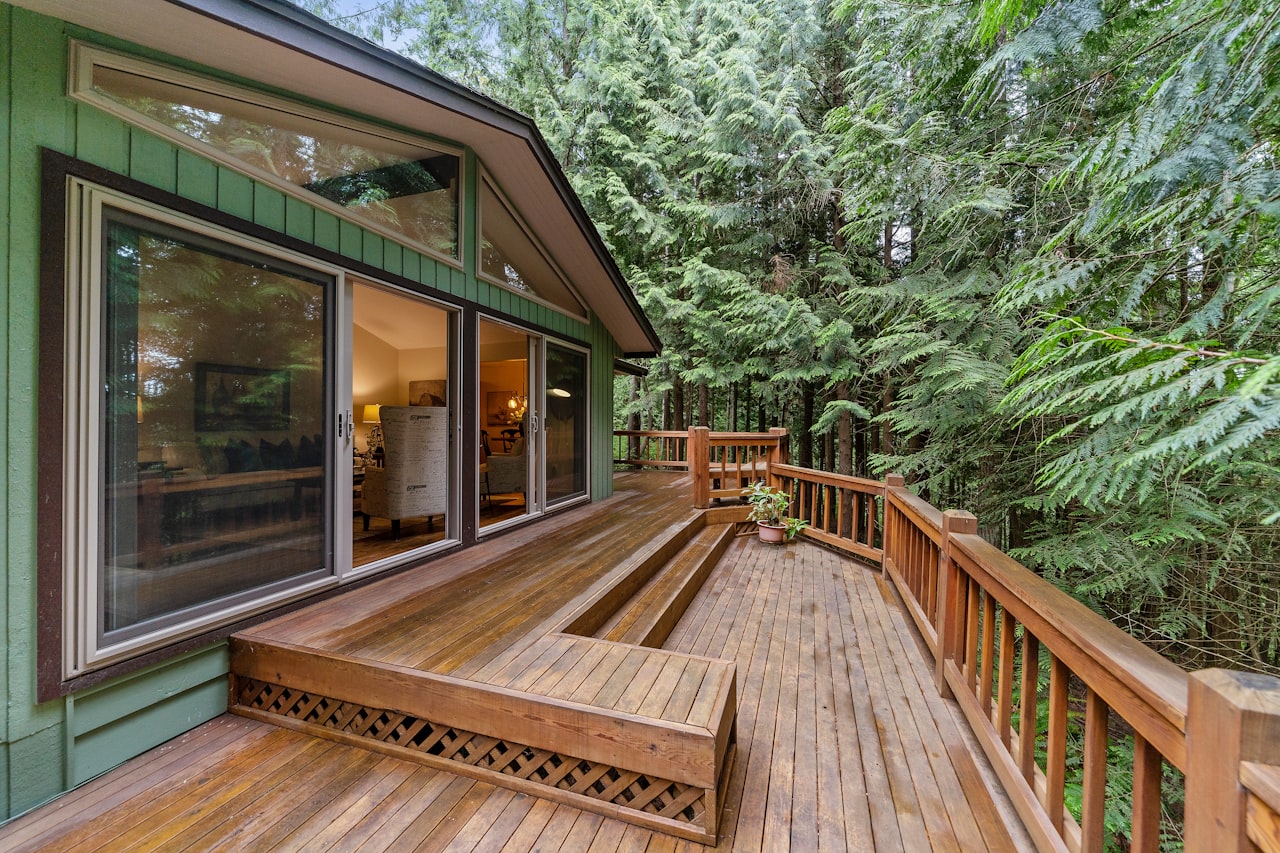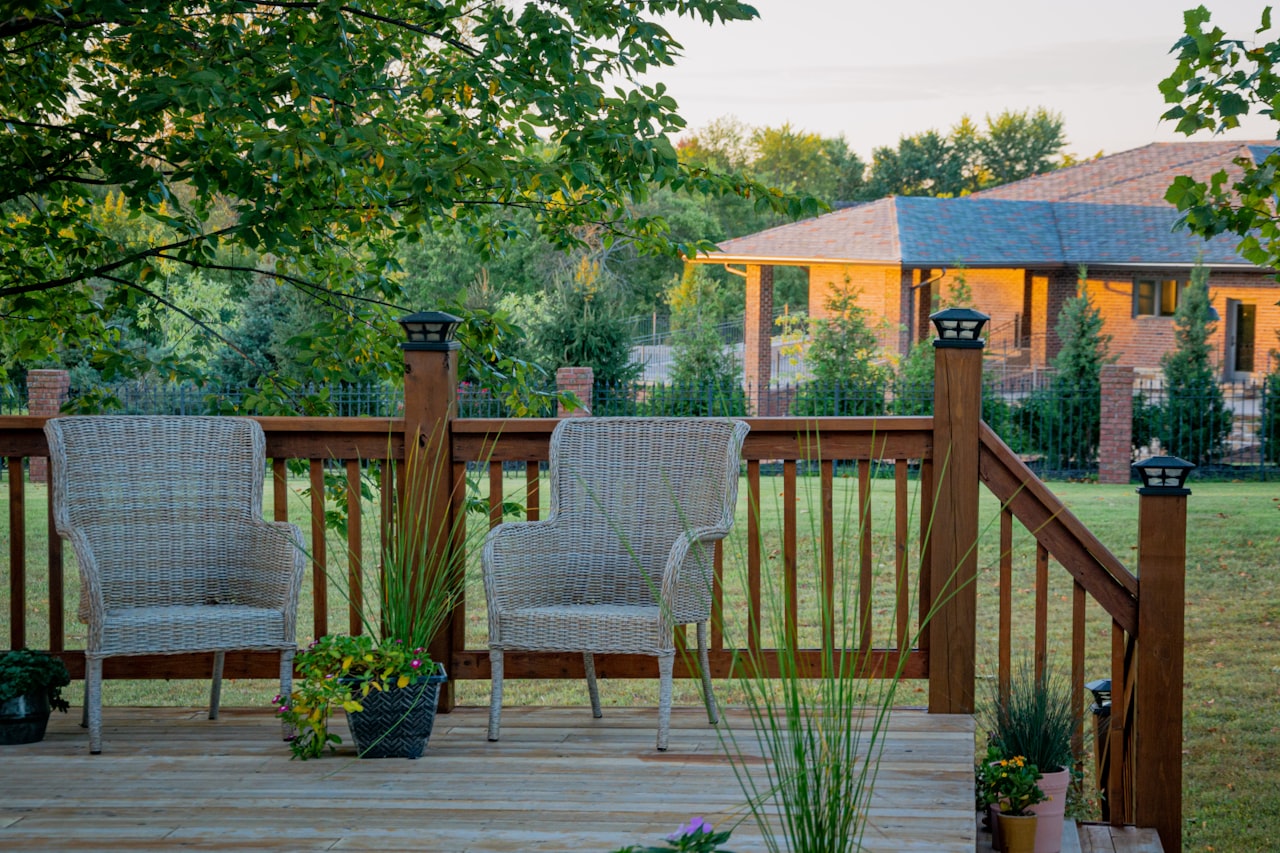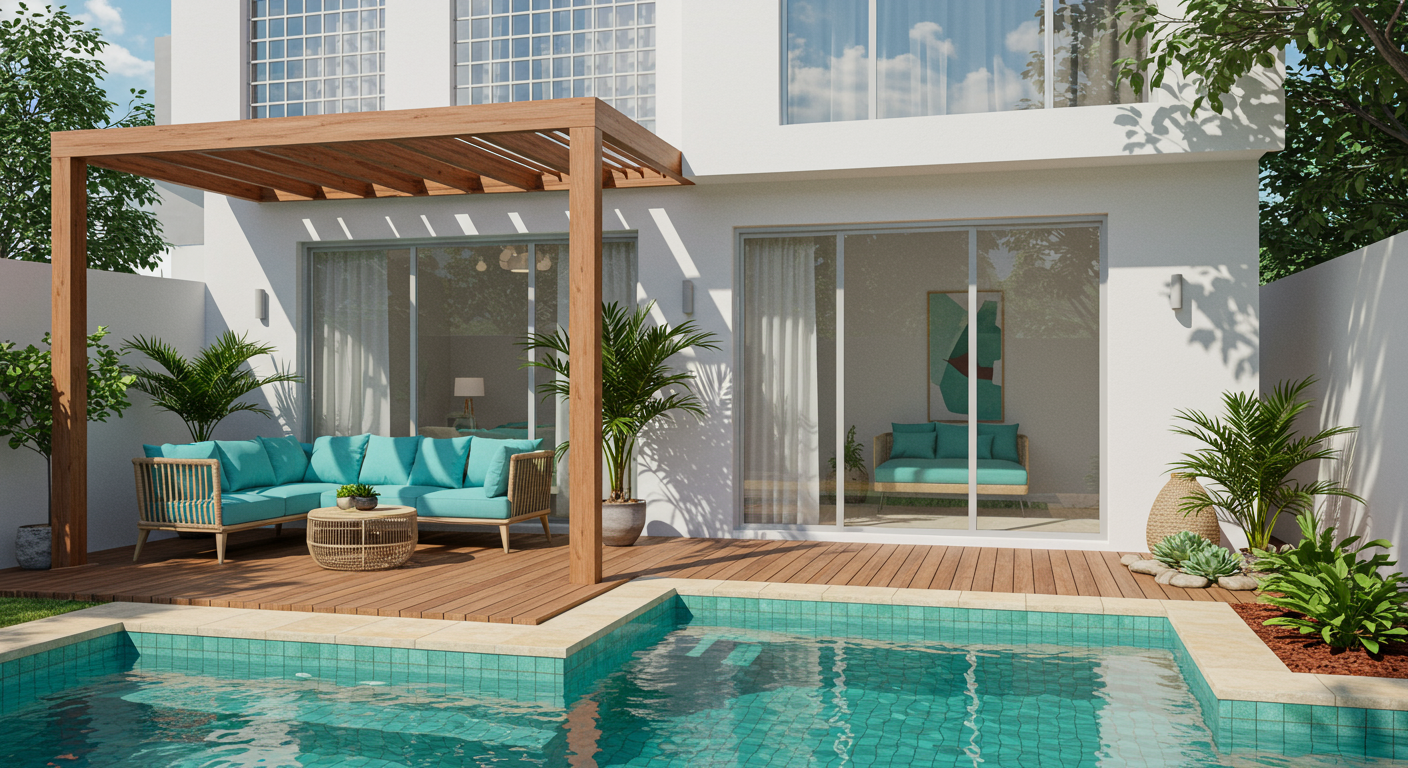
Everything You Need to Get Started
You’ve designed it. Now it’s time to plan and build it. When you’ve completed your design, Lowe’s Deck Designer will automatically provide everything you need to get started.
What’s included:
Cost estimate
Professional 3D rendering
Materials list
Building plans
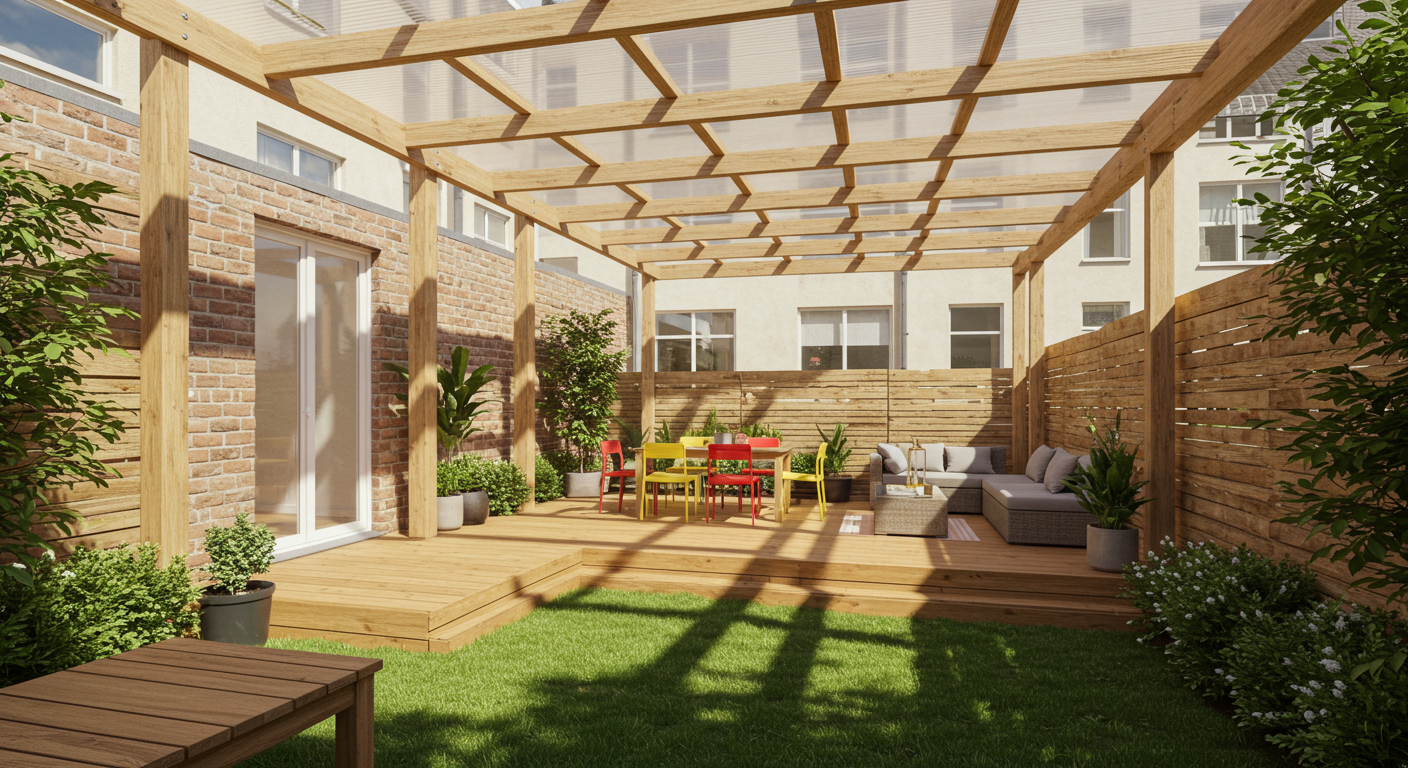
Alternatives to Wood Decking
Right now alternatives may provide much higher value for your deck, last longer, and require less maintenance. Since they were more expensive in the past many homeowners skipped the option to use these materials. Now they provide a great value when compared to the overpriced wood.
Composite Materials
The most common substitutes are composite materials. These are various materials that are made (often from recycled materials) that are manufactured using advanced extrusion methods. Meaning that you take the raw ingredients, heat them up, then push them out under pressure into a mold for the decking planks. You will find composite decking made from many materials. Popular are bamboo, wood and plastic, peanut shell decking, and much more. There are many popular national brands like Trex on the market today.
PVC Boards
Another option is PVC decking. It seems odd to imagine when we think of the common white or grey PVC. But this is PVC that is colored textured and treated to look like wood. PVC is also easy to cut and work with for the homeowner or do it yourself.
Vinyl Decking
Vinyl decking can be used over older existing decks or in combination with other decking materials for a finished look and added protection.

Aluminum decking is one alternative that has not seen as much use as it should because of its higher costs. Now with lumber as expensive as it is, it may be time to give it a look as one of your lumber alternatives.
Bamboo Decking
Not just for composite anymore. Manufacturers are making bamboo a realistic option now. Unlike the composite versions you will need to stain seal and maintain a true bamboo deck but the finished look and lower cost per square foot now may be attractive.
Rubber Paver Tiles
Using tiles to pave a ground-level deck may be an alternative you can consider in dry areas with great drainage. I have paved backyard deck areas with these and sand as the base with great results. Just be aware in most areas you will want to install French drainage systems that pull the water away from the paved deck area to maintain its strength and long-lasting result. That may be more work than you signed up for if your soil is hard and you have to dig deep. Or do a great deal of prep work to prepare your deck area. Traditional raised decks can use concrete piers or bases and require less site work for a simple raised deck. In essence with a raised deck, you prepare your footings making sure they are all level and lined up. You do not have to full grade and level the entire area. However paved decks may be much less costly since the soil, sand, and rock will be your foundation versus more expensive alternatives.
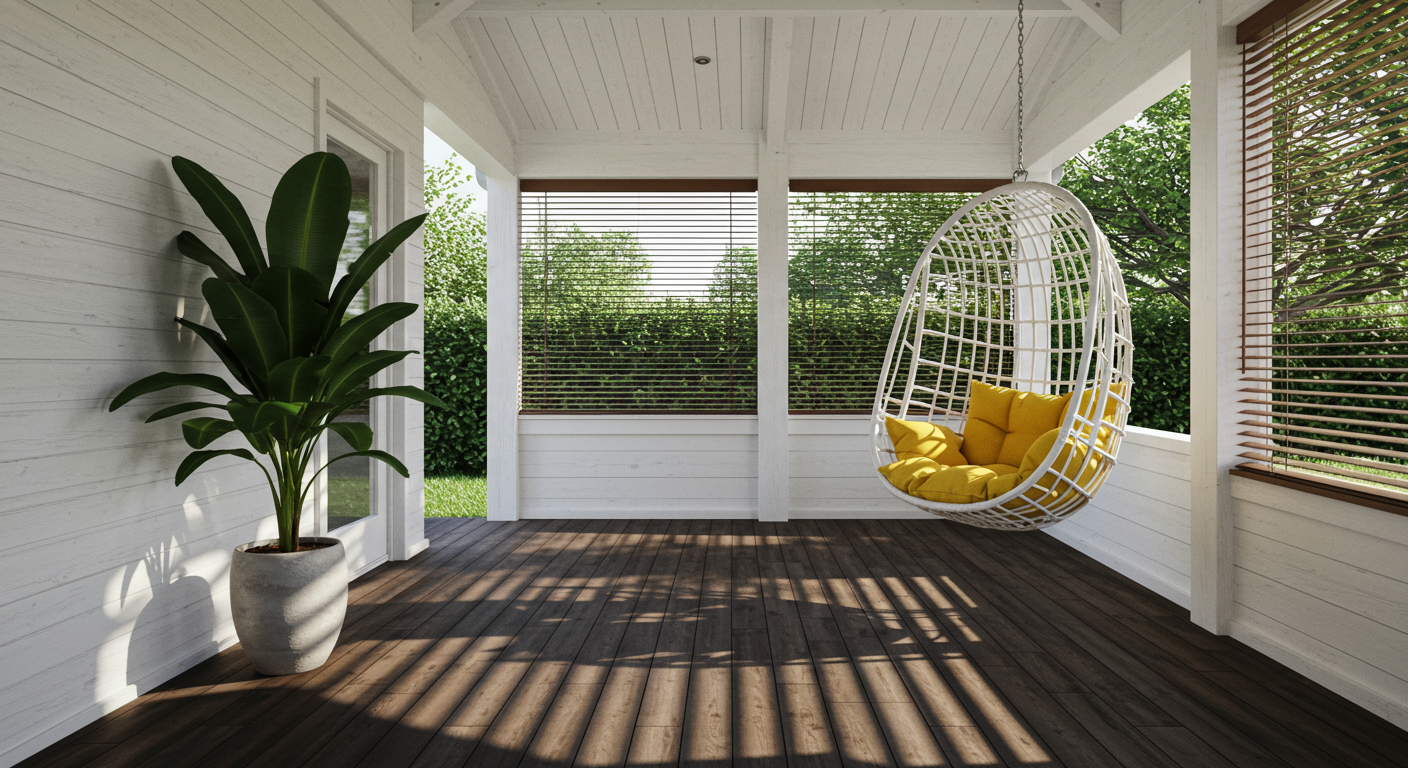
Once you have the shape of your design is time to take a tape measure to your backyard and determine the size of your deck, or deck elements. Then once you have the rough dimensions return to the free design tool and put them in the system.
I recommend switching to the Draw Deck option and drawing out your deck dimensions to scale. Once you have your design go into 3D mode and choose the look, materials, and other key elements of the design. Once you have a design you love you can click on the materials list and take that with you for an estimate of the costs, or to order your materials. It
will even give you an estimate of the costs right in the tool so you can start over and chose other materials if your first effort seems out of your budget. Other things to consider when designing a deck for Austin Texas Since you are designing a deck to use year-round in Austin Texas you need to think about what you are going to do for shade. Do you invest in your own Tiki-Bar complete with a thatch roof, or do you go with a shade sail or canopy with proper anchoring. Another popular option is sun shades that get mounted to your home and hang over the deck. These come with either manual cranks to put them up and bring them down, or small motors that do that work for you. A lasting shade option is best and I would consider anywhere from 10- 20% the cost of your project for a Texas deck to include your plan for shade. With Average highs, June-September in the 90’s shade and protection from the sun is critical to your deck’s success, and usefulness. Even if you use your deck mostly in the evenings you will be able to enjoy it sooner and for longer periods of time.
Hiring a Professional or Doing it Yourself
